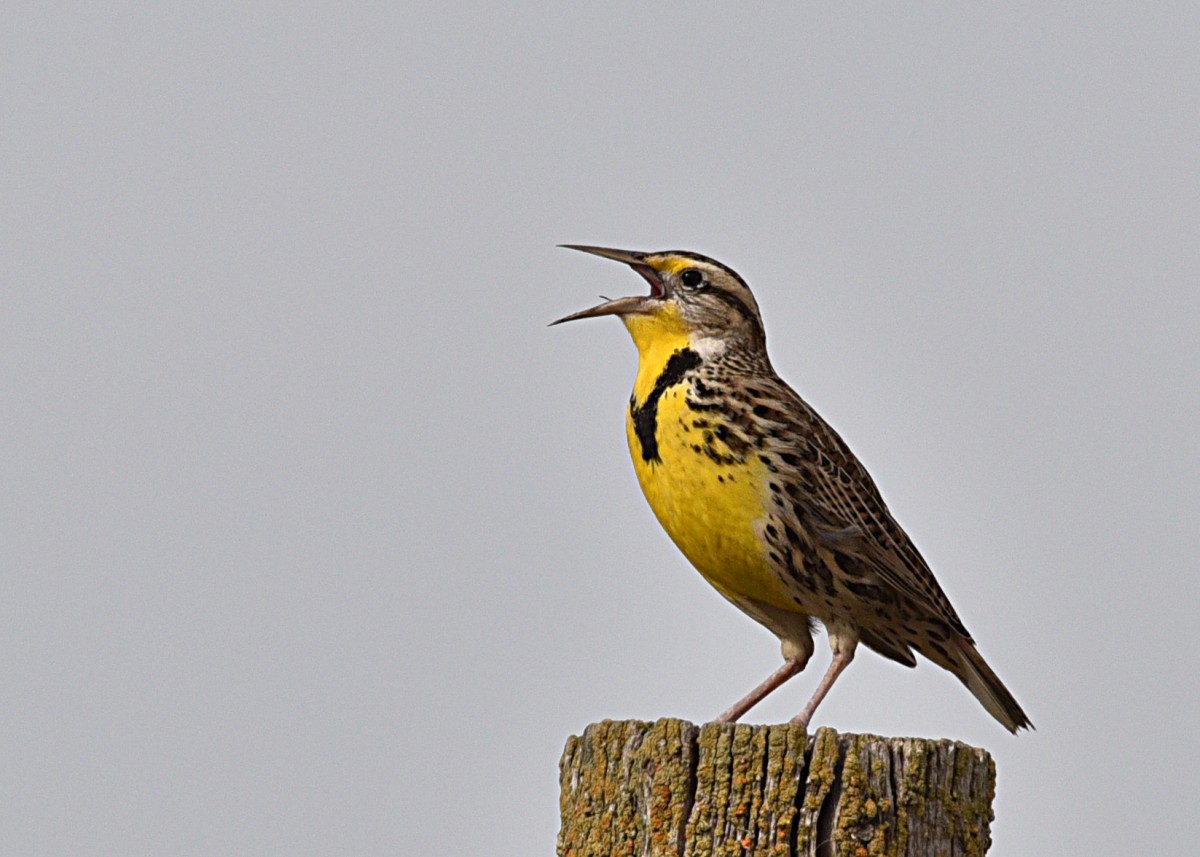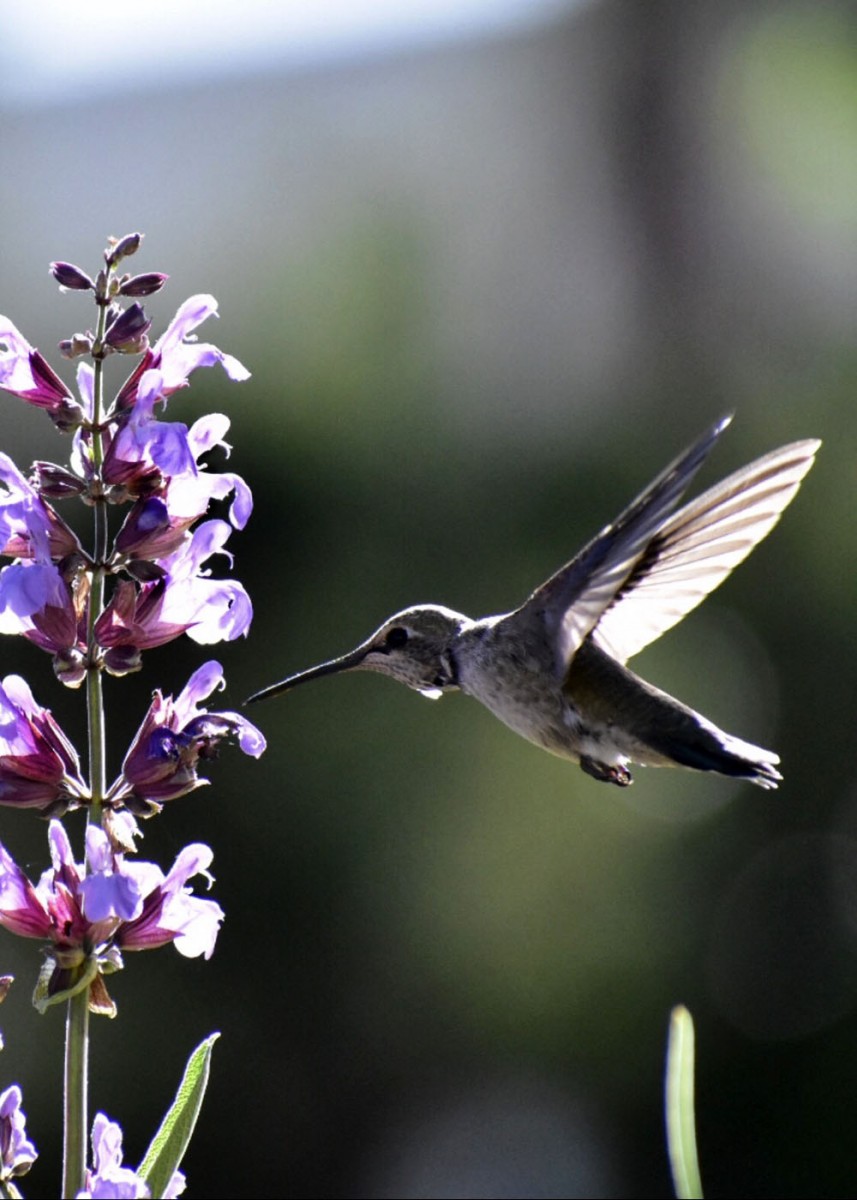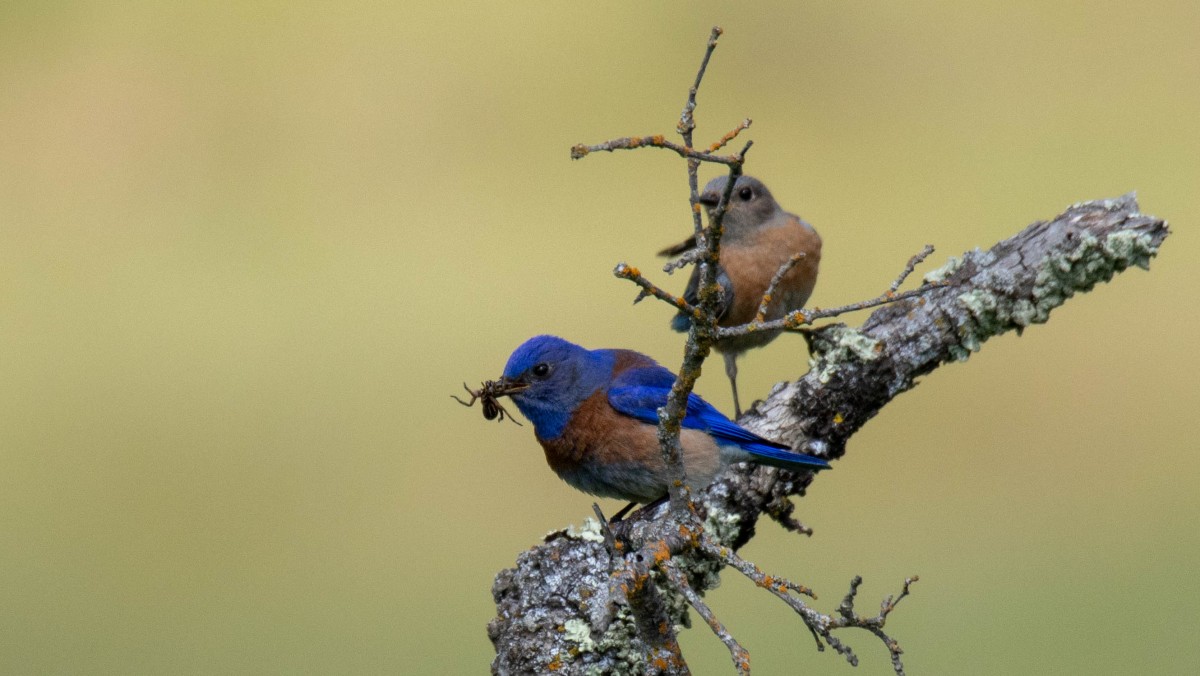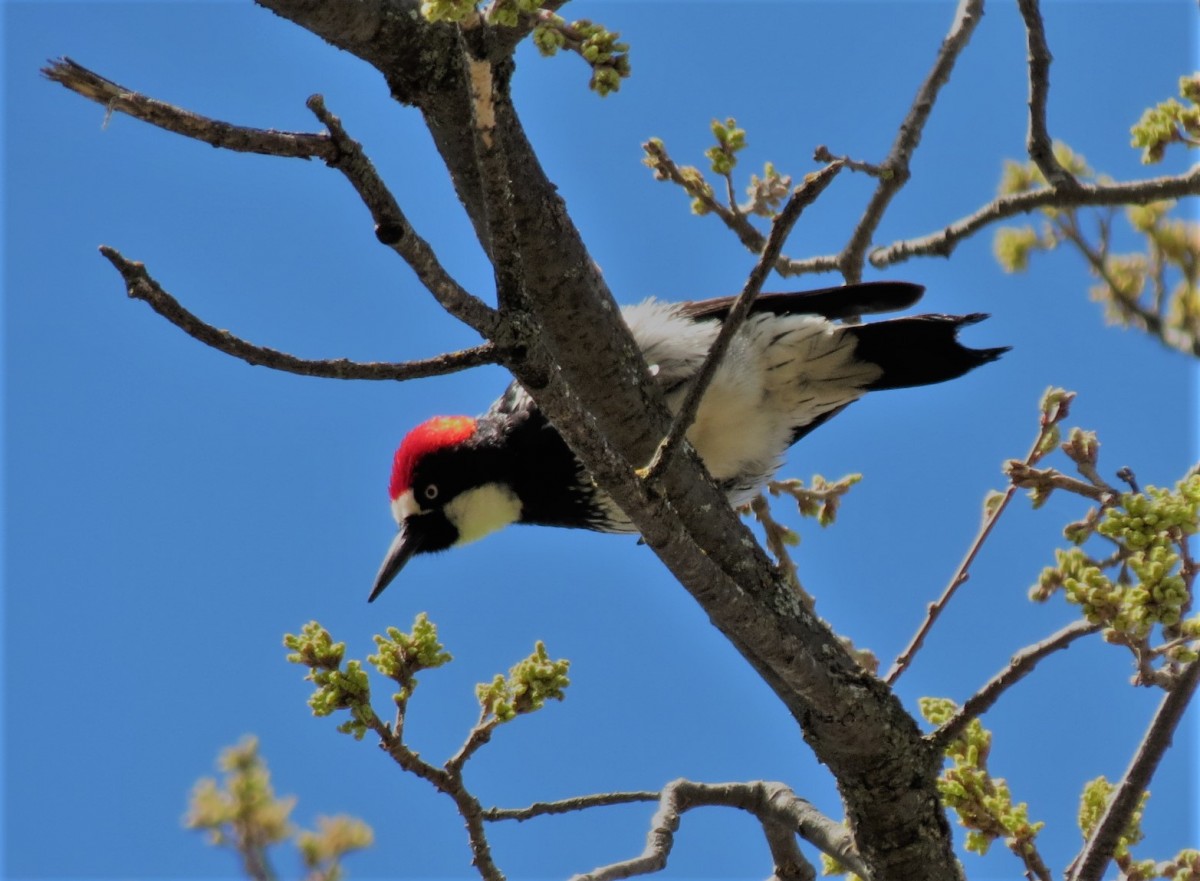Even if you don't call yourself a birder, it has probably been difficult to ignore the frenzied activities of birds lately. This is because spring is a busy time for birds. Between foraging, finding a mate, defending territories, and building nests, birds are checking off their to-do list in preparation for the rearing season ahead. As a result, non-birders and birders alike can see and hear a rich diversity of birds with arguably minimal effort.
For instance, listen for the song of the male Western meadowlark (photo by Rebecca Dunn) in the valley and foothills. His song is a lure for females, and also a warning to other males to stay clear of his territory.


Whether you're up the mountains or down in the valley, keep an eye out for the American robin, who can be found everywhere this time of year. Not literally found everywhere, but it seems like it. Listen for the male robin's characteristic "cheer-up, cheerily, cheer-up, cheerily" song, which he sings to defend his territory.
Also, keep your ears open for a nasally "yank-yank" call. This is a common call of our region's nuthatches. The purpose of the call may be a simple chat with their mate or a warning to rivals to stay away.
Watch for hummingbirds (photo by Katelyn Hawthorne), who are finally able to enjoy the sweet nectar of spring-time flowers.
You might see jays flying around with nest material (e.g., sticks, leaves, mud) in their beaks. The resident Steller's jays on my property are busily building their nests on branches of incense cedars.
Along streams and in other riparian areas listen for the black phoebe's soothing song, "pi-tsee" or "phoe-be". Recently, while CSERC staff were out water quality monitoring in the lower elevations of the Tuolumne and Merced River watershed, we could hear "phoe-be" at almost every site.
You may also encounter intraspecific interactions. Look for females and males of the same species partake in courtship displays, or look for males of the same species battle for territory through song or dance. While in oak woodlands or coniferous forests look for Western bluebirds (photo by Michael Dittman), who pair up in spring and maintain mostly monogamous relationships throughout the breeding and rearing season.


Finally, keep an eye out for the region's numerous woodpecker species. When in oak woodlands, listen for the "jac-ob, wake-up" call of the acorn woodpecker (photo by Devin Chubb). They'll be busy chatting amongst relatives in their large family groups foraging and preparing nest cavities.
If you're interested in learning a bit more about birds, click here to go to our Kid's Nature Games page. There you can discover some of our region's bird species and where you might find their nests in the landscape. It's a great online activity for kids, too!
But be sure to get out and enjoy the hustle and bustle of nature during this busy spring season 🙂

